A word with
Emanuele Piras
Elio Mignini
Member of AgroFOOD Industry Hi Tech's Scientific Advisory Board
What inspired the development of aurist™ agc, and how does it differ from other hair conditioning polymers on the market?
We identified a gap in the functional category, particularly within the hair conditioning space, for ingredients that are both high-performing and sustainable. Historically, achieving sustainability often meant compromising on performance. AURIST™ AGC was developed with the belief that formulators should never have to make trade-offs between performance AND sustainability.
Combining the high performance, purity, and consistency of synthetic conditioning polymers used today with the sustainability profile of natural polymers, AURIST™ AGC is a novel, readily biodegradable alpha-glucan polysaccharide designed using IFF’s proprietary Designed Enzymatic Biopolymers (DEB) technology.
Unlike other hair conditioning polymers,AURIST™ AGC is a cationic conditioning biopolymer that can form completely transparent formulations, even when combined with anionic ingredients. Compatible with a wide range of commonly used personal care ingredients, AURIST™ AGC does not build viscosity allowing to higher inclusion rates to meet performance without changing final product characteristics. It does not require pH neutralization. It is supplied in the format of a liquid that is easy to pour, cold processable, with no pre-mix required.
The ease of its formulation extends to its application in, for example, foaming pump formats, where it does not clog the nozzle, ensuring a smooth and consistent user experience.
Can you explain the key benefits of deb technology in the development aurist™ agc?
DEB is a biotech platform proprietary to IFF where enzymes are used in a mild, biocatalysis process to create a new-to-the-world class of alpha-glucan polysaccharides through the enzymatic polymerization of glucose. These alpha-glucan polysaccharides can then be designed and customized to meet desired performance needs and product specifications for specific applications. Just like natural polymers, these can then be further optimized via chemical modification.
DEBs deliver three important benefits:
- Highly customizable. DEBs are a class of versatile polysaccharides which can be modified with a variety of functional groups including but not limited to hydrophobic, hydrophilic, and charged groups. This polymer class can be specifically designed to be more formula compatible or to provide additional benefit, such as conditioning or rheology modification.
- Structural uniformity. The controlled enzymatic process ensures structural uniformity for the DEBs. This offers high reproducibility and little batch-to-batch variation.
- Designed for biodegradability. Being able to customize the structure allow DEBs to integrate performance parameters into the development phase and design a high-performing polymer that is still biodegradable.
Moreover, the DEB process and AURIST™ AGC are purposefully designed to be produced at scale. To drive meaningful change in the beauty and personal care industry requires reaching quantities that matter. Leveraging the economy of scale is pivotal for driving innovation, reducing costs, and enhancing sustainability. As production volumes increase, per-unit costs decrease, making sustainable products more accessible and competitive in the market. This, in turn, can influence broader consumer behavior toward eco-conscious choices.


What benefits does aurist™ agc provide in haircare, and how do these meet consumers’ expectations today?
AURIST™ AGC was introduced in 2023 and has since won several accolades in the industry. Its haircare benefits include improving wet and dry combability. In body wash applications, it helps to improve skin conditioning (reduced skin roughness feel) and rinsability in personal wash formulations.
In early 2024, we presented data demonstrating significant enhancements in hair fluffiness and gloss, targeted primarily to the Chinese market. This year, at In-Cosmetics Global 2025, we are excited to share how AURIST™ AGC polymer forms a film on hair, delivering a multitude of benefits for leave-in hair care products, such as gentle styling and detangling.
Consumers today see hair as a powerful form of self-expression, reflecting our personality, culture, and individuality. When we feel good about our hair, it boosts our confidence and self-image. Engaging in haircare routines, such as washing, styling, and grooming, can be therapeutic and promote relaxation.
AURIST™ AGC enhances these experiences by being a versatile ingredient in various haircare formulations, including rinse-off and leave-on products. Its unique properties, particularly in improving hair’s fluffiness and gloss, make it an essential component for achieving healthy, beautiful hair. Moreover, its sustainability profile of being readily biodegradable and having a natural origin (ISO 16 128) of 97.85% can help appeal to environmentally conscious consumers seeking effective and sustainable haircare solutions.
What exciting future development can we expect to see from the deb technology?
Looking ahead with the DEB technology, we are committed to making a significant impact in the functional space, particularly where sustainable options are currently limited or under-performing in terms of efficacy. Our goal is to help brands meet regulatory requirements and consumer expectations for sustainable solutions. By leveraging our strong R&D expertise, DEB aims to drive innovation and set new standards in the beauty and personal care industry.
References and notes
- Arenas-Jal M, Suñé-Negre JM, Pérez-Lozano P, García-Montoya E. Trends in the food and sports nutrition industry: A review. Critical Reviews in Food Science and Nutrition. 2020;60(14):2405-21.
- Angus A. Top 10 Global Consumer Trends for 2018: Emerging Forces Shaping Consumer Behaviour: Euromonitor International; 2018 (Available from: https://tourismaccommodation.com.au/wp-content/uploads/2018/03/Top10-Global-consumer-trends-for2018.pdf.
- Labrecque LavdE, Jonas and Mathwick, Charla and Novak, Thomas and Hofacker, Charles. Consumer Power: Evolution in the Digital Age. Journal of Interactive Marketing 2013;27.
- Dunford M. Fundamentals of Sport and Exercise Nutrition 2010.
- Galaz GA. Chapter 20 - An Overview on the History of Sports Nutrition Beverages. In: Bagchi D, Nair S, Sen CK, editors. Nutrition and Enhanced Sports Performance. San Diego: Academic Press; 2013. p. 205-10.
- Bird SP. Creatine supplementation and exercise performance: a brief review. J Sports Sci Med. 2003;2(4):123-32.
- Schofield L. Vitamin Retailer The Dietary Supplement Industry Leading Magazine 2022 (Available from: https://vitaminretailer.com/activating-your-fitness-nutrition-department/.
- Newman JI, Xue H, Watanabe NM, Yan G, McLeod CM. Gaming Gone Viral: An Analysis of the Emerging Esports Narrative Economy. Communication & Sport. 2020:2167479520961036.
- Tartar JL, Kalman D, Hewlings S. A Prospective Study Evaluating the Effects of a Nutritional Supplement Intervention on Cognition, Mood States, and Mental Performance in Video Gamers. Nutrients. 2019;11(10).



